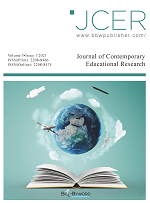A Comparative Study on the Spatial Consciousness of Traditional Paintings in the East and the West
Abstract
This article compares and analyzes the development history, ideological culture, and philosophical concepts of traditional paintings, landscape paintings, and still life paintings in the East and the West. The essence of painting is a form of visual consciousness. There is a unique way of processing and expressing spatial consciousness in different images, regions, and humanistic spirits of Eastern and Western paintings. The difference in spatial awareness promotes mutual learning, guidance, and promotion between the Chinese and Western art which have different historical backgrounds, aesthetic concepts, and national customs. Therefore, different ways of paintings would also have differences in the spatial consciousness of the paintings.
References
Cheng C, 2005, Sketch, Sichuan Fine Arts Publishing House, Chengdu, 8-9.
Ma Y, 2001, Painting techniques, Southwest Normal University Press, Chongqing, 7-8.
Ye Z, 2012, A visual analysis of Chinese and Western painting methods in space. Literary Controversy, (7): 8-9.
Zhou R, 2009, Research on the differences in spatial consciousness of Chinese and Western paintings. Fine Arts Grand View, (7): 4-7.

